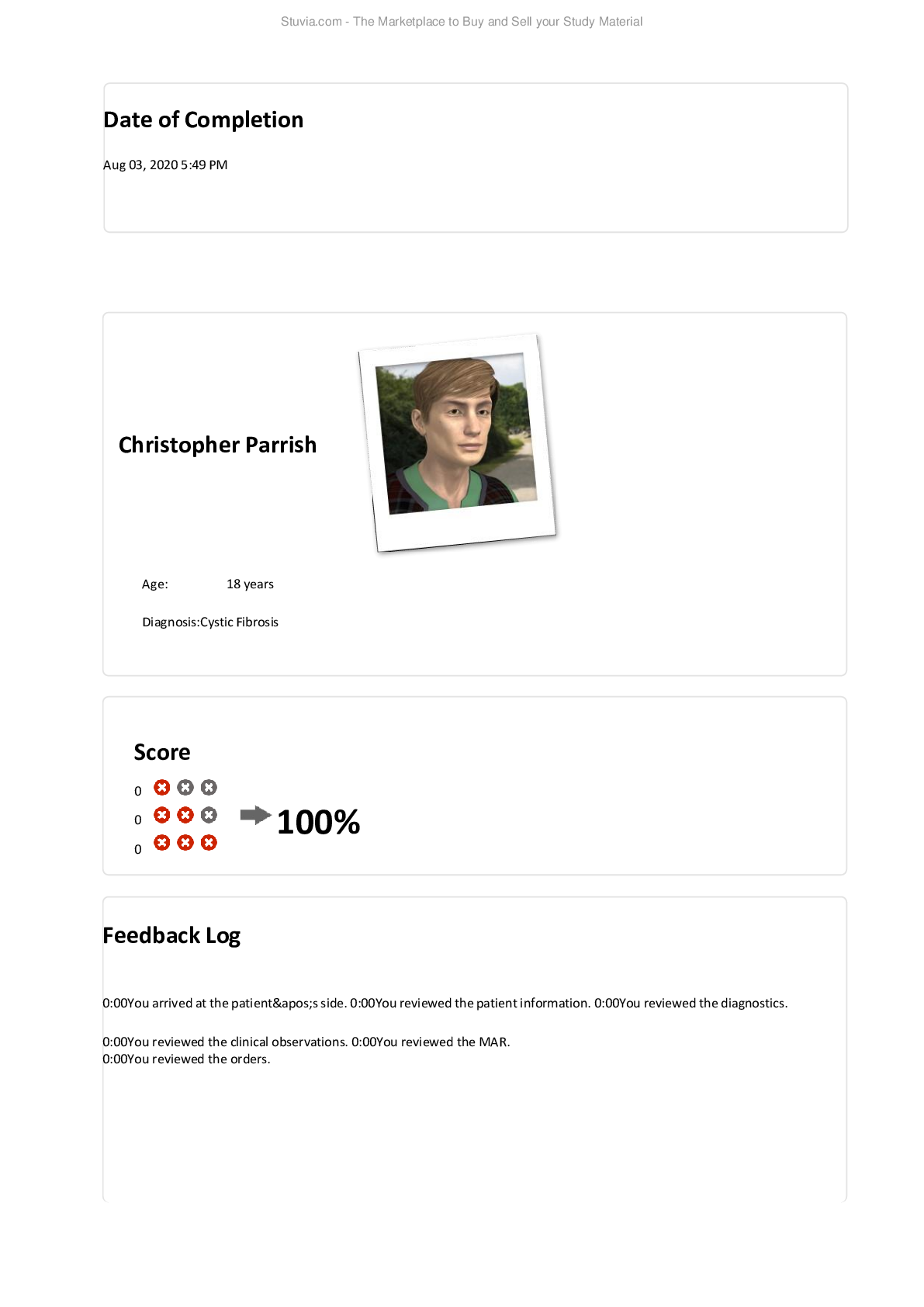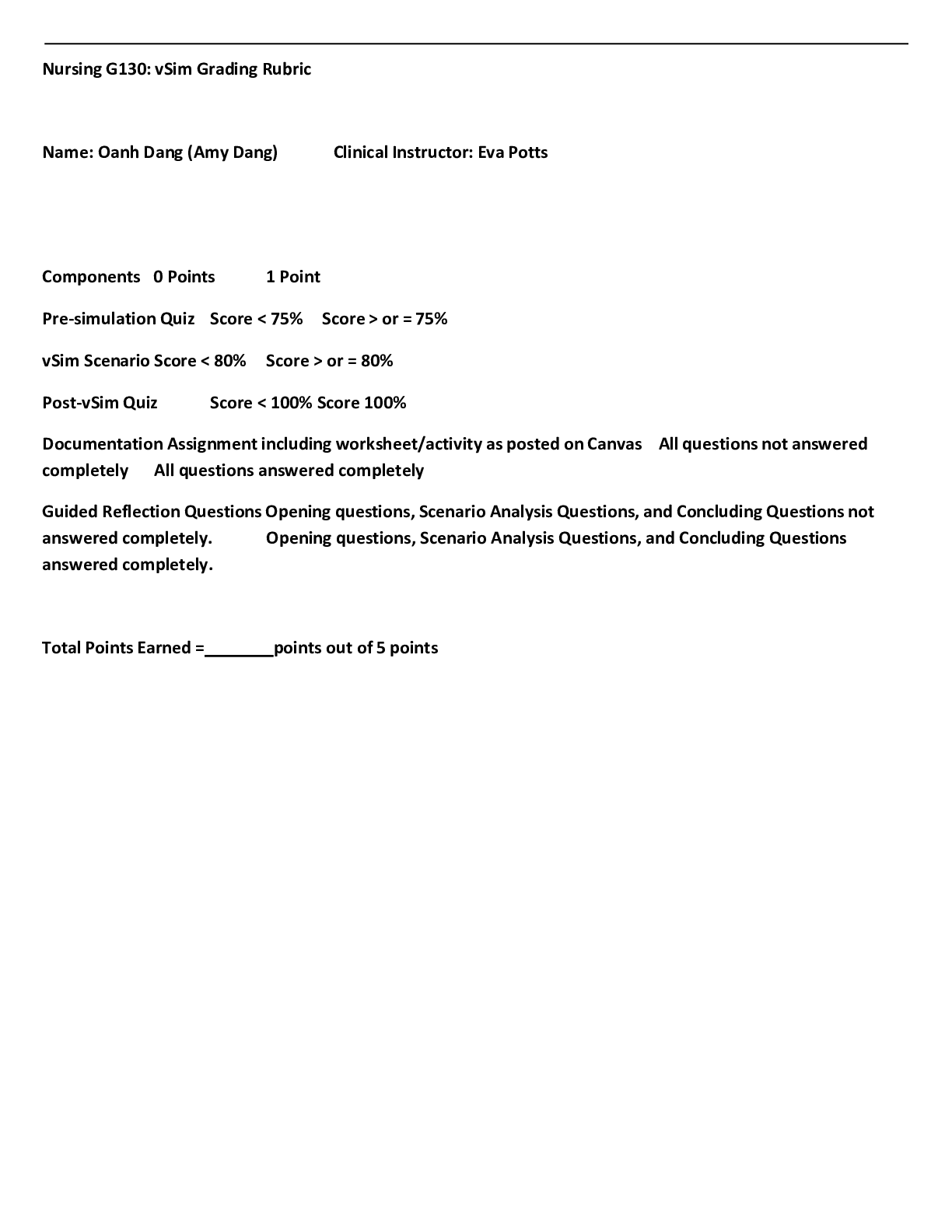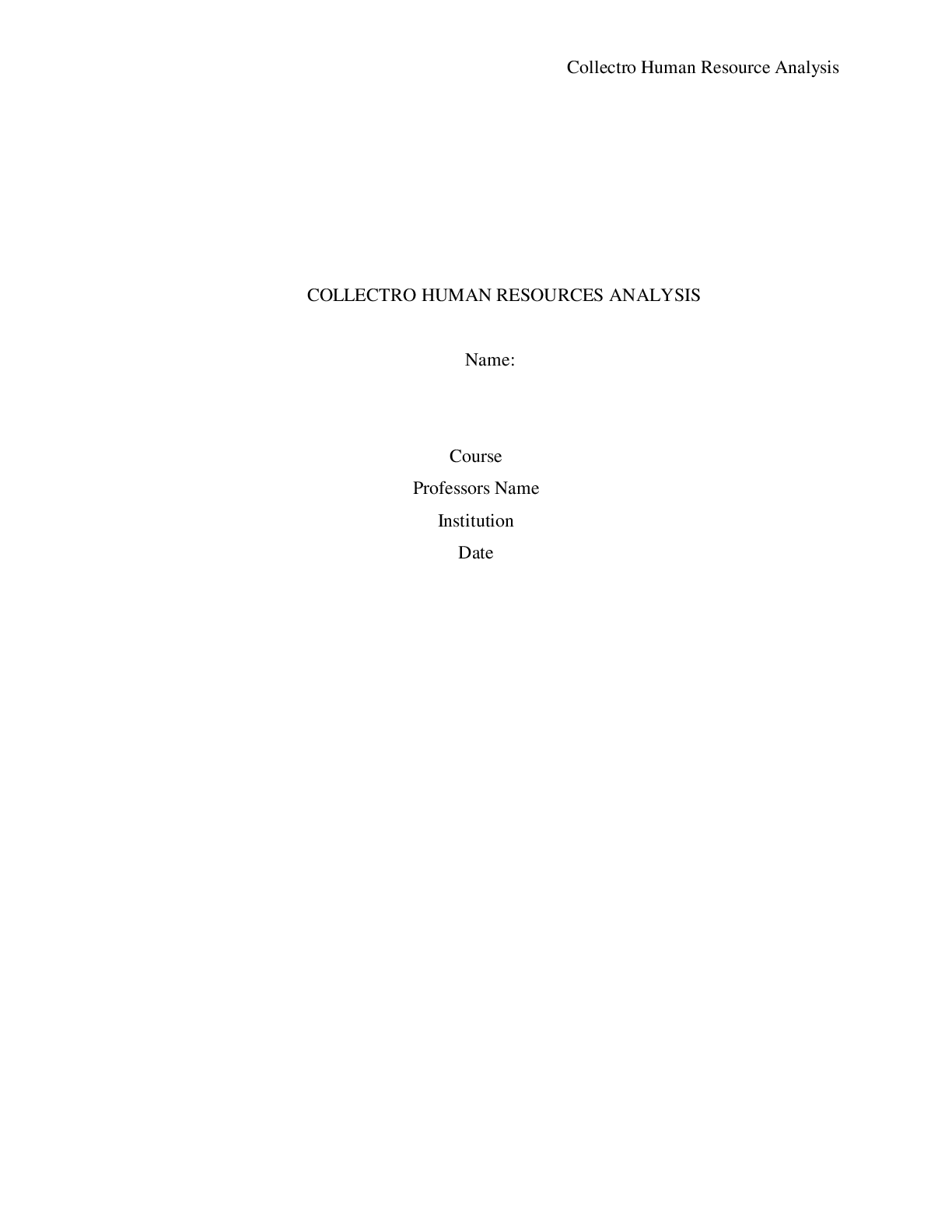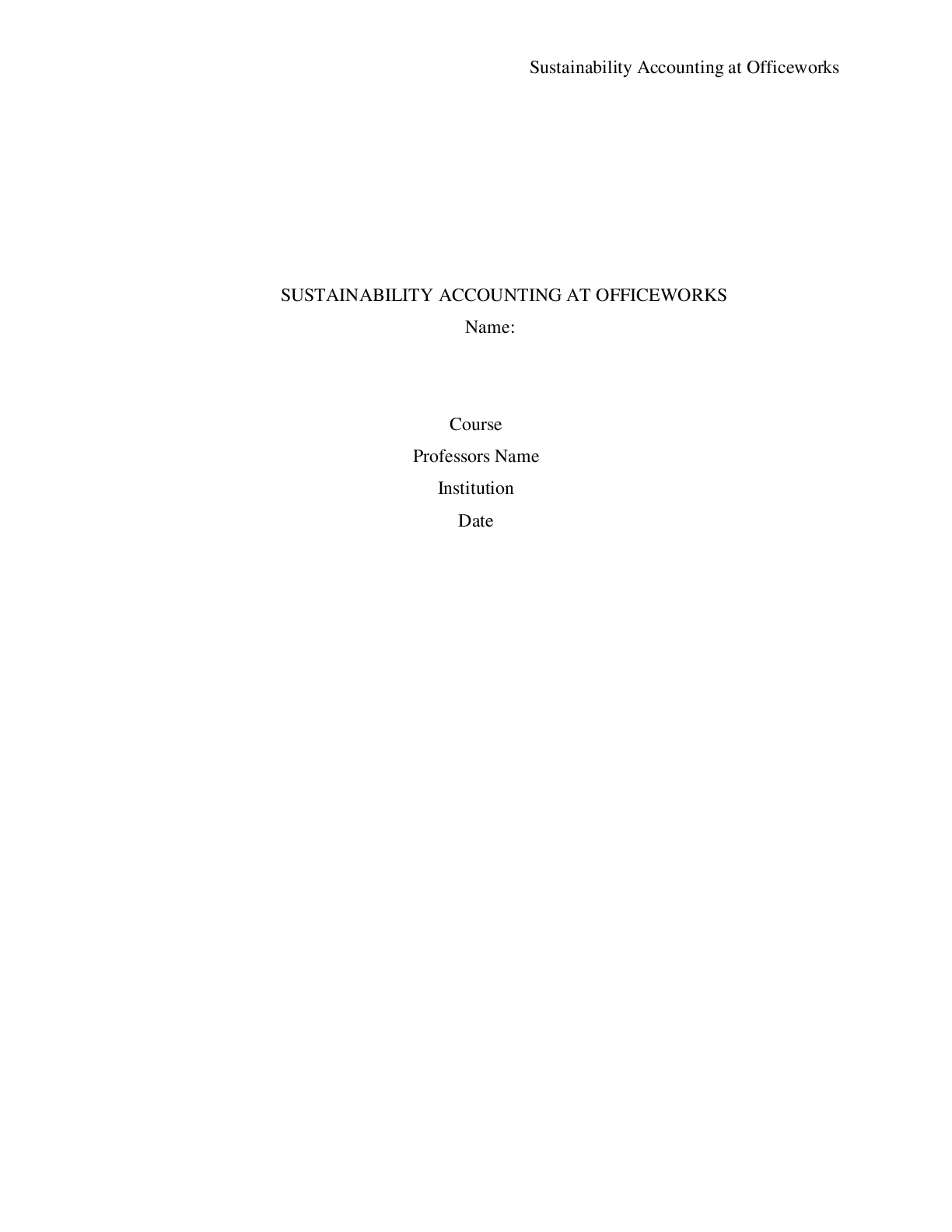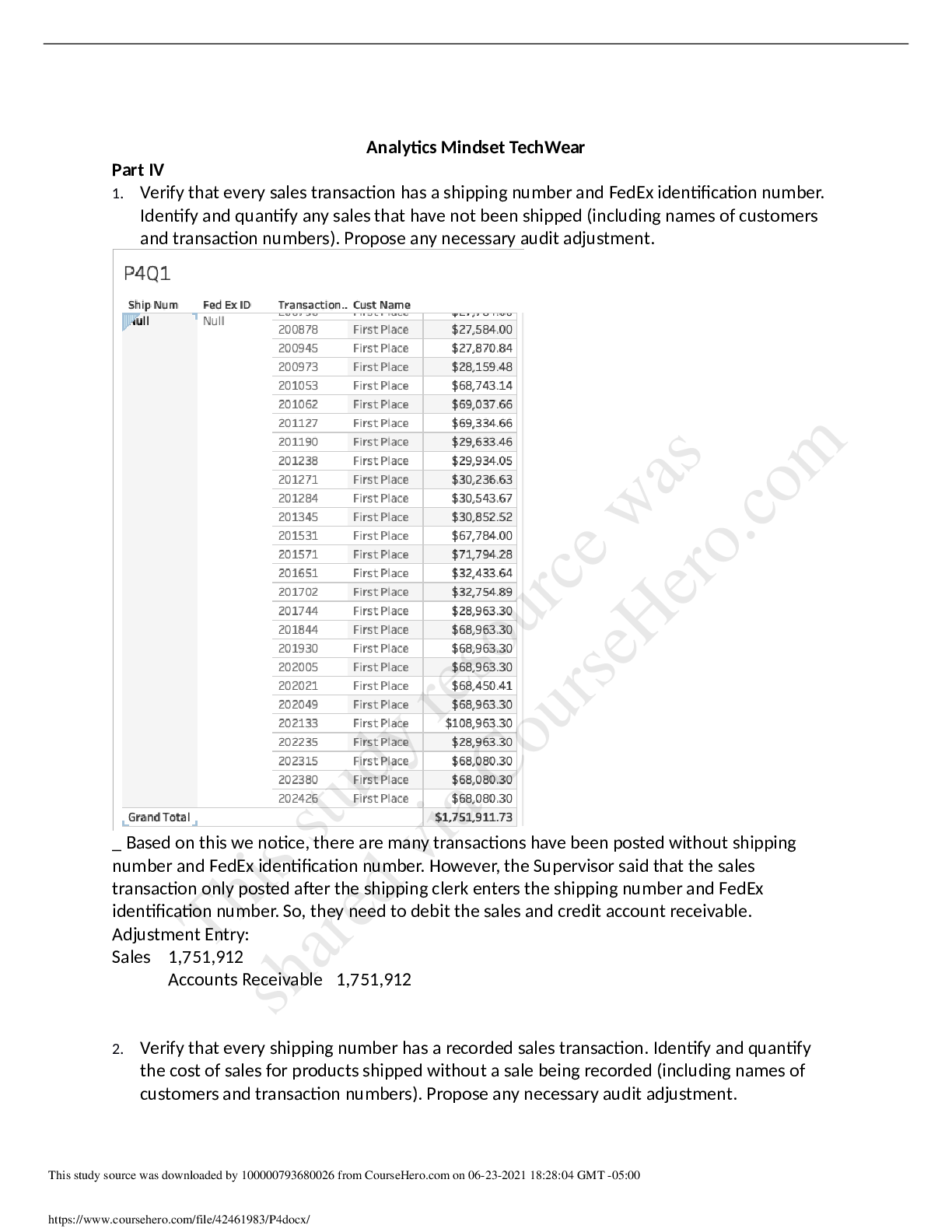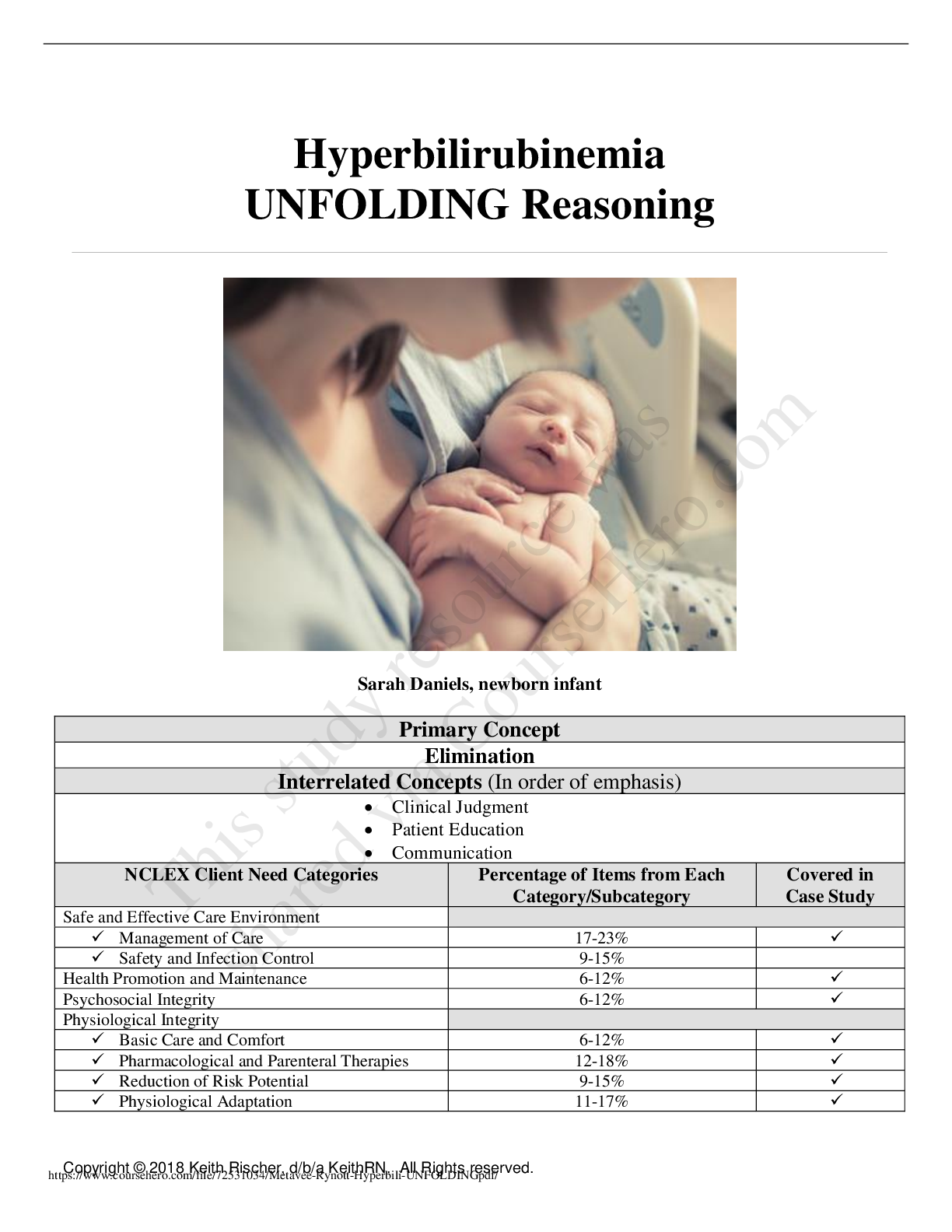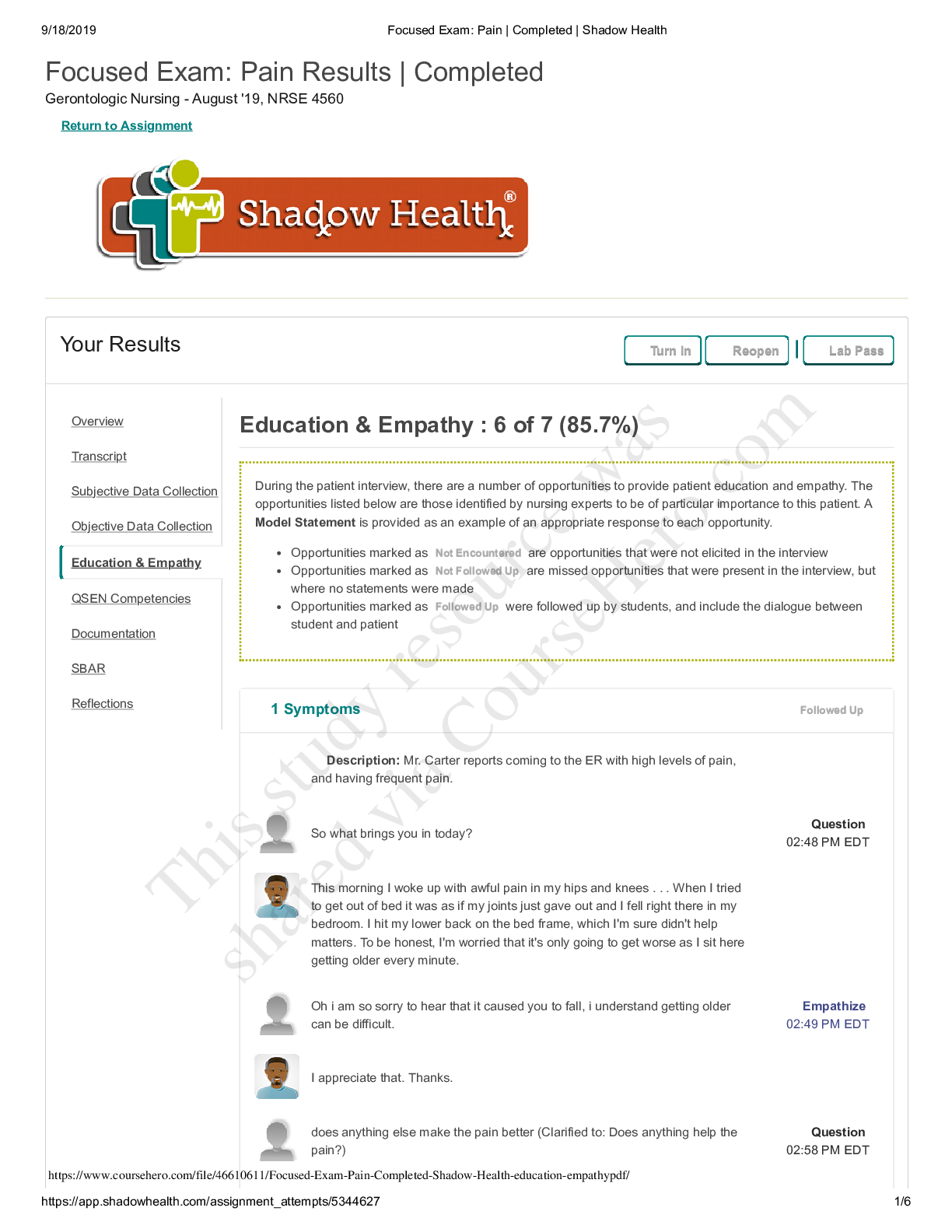*NURSING > CASE STUDY > VSIM Christopher Parrish Diagnosis: Cystic Fibrosis feedback log - Scored 100% (latest 2023) (All)
VSIM Christopher Parrish Diagnosis: Cystic Fibrosis feedback log - Scored 100% (latest 2023)
Document Content and Description Below
Date of Completion Jul 24, 2020 6:34 PM Christopher Parrish Age: 18 years Diagnosis: Cystic Fibrosis Score 0 0 0 100% Feedback Log 0:00 You arrived at... the patient's side. 0:00 You reviewed the patient information. 0:00 You reviewed the patient log. 0:00 You reviewed the diagnostics. 0:00 You reviewed the clinical observations. This study source was downloaded by 100000860583932 from CourseHero.com on 01-18-2023 11:50:19 GMT -06:00 https://www.coursehero.com/file/65627038/Feedback-Log-Score-Christopher-Parrishpdf/ 7/24/2020 Feedback Log & Score — Christopher Parrish Jul 24, 2020 6:34 PM https://simserver.wkhpe.com/debriefing/debrief.aspx?dss=https%3A%2F%2Fsso.wkhpe.com%2FDebriefingLog%2FSingle%2F424d3753-78da-416f-b… 2/4 0:00 You reviewed the MAR. 0:00 You reviewed the orders. 0:00 You reviewed the intake and output. 0:10 Patient status - ECG: Sinus rhythm. Heart rate: 81. Pulse: Present. Blood pressure: 119/71 mm Hg. Respiration: 12. Conscious state: Appropriate. SpO2: 97%. Temp: 99 F (37.3 C) 0:18 You washed your hands. To maintain patient safety, it is important to wash your hands as soon as you enter the room. 1:10 Patient status - ECG: Sinus rhythm. Heart rate: 82. Pulse: Present. Blood pressure: 122/72 mm Hg. Respiration: 12. Conscious state: Appropriate. SpO2: 97%. Temp: 99 F (37.2 C) 1:31 You introduced yourself. This was reasonable. 1:47 You identified the patient. To maintain patient safety, it is important that you quickly identify the patient. 1:55 You asked if the patient was <Allergy>allergic<> to anything. He replied: 'No, I am not allergic to anything.' 2:07 You asked the patient: Do you follow a special diet prescribed by your doctor? He replied: 'Yes. A high-fat, high-calorie diet.' 2:10 Patient status - ECG: Sinus rhythm. Heart rate: 82. Pulse: Present. Blood pressure: 119/71 mm Hg. Respiration: 12. Conscious state: Appropriate. SpO2: 97%. Temp: 99 F (37.2 C) 2:30 You educated the patient about diet. This was reasonable. 2:51 You asked the patient: How many bowel movements do you have every day and what is the consistency? He replied: 'I usually have one or two, and they're mostly formed but soft.' 3:10 Patient status - ECG: Sinus rhythm. Heart rate: 82. Pulse: Present. Blood pressure: 121/72 mm Hg. Respiration: 12. Conscious state: Appropriate. SpO2: 97%. Temp: 99 F (37.2 C) 3:28 You educated the patient about positioning. 3:45 You assisted the patient into a high sitting position. 4:10 Patient status - ECG: Sinus rhythm. Heart rate: 82. Pulse: Present. Blood pressure: 116/70 mm Hg. Respiration: 12. Conscious state: Appropriate. SpO2: 97%. Temp: 99 F (37.2 C) 4:57 You checked the <Temperature>temperature<> at the ear. The temperature was 99 F (37.2 C). 5:10 Patient status - ECG: Sinus rhythm. Heart rate: 83. Pulse: Present. Blood pressure: 119/71 mm Hg. Respiration: 12. Conscious state: Appropriate. SpO2: 96%. Temp: 99 F (37.2 C) 5:21 You attached the <Pulseoximeter>pulse oximeter.<> It is a good idea to monitor the saturation and pulse here. This will allow you to reassess the patient continuously. 5:24 You looked for normal breathing. He is breathing at 12 breaths per minute. The chest is moving equally. This study source was downloaded by 100000860583932 from CourseHero.com on 01-18-2023 11:50:19 GMT -06:00 https://www.coursehero.com/file/65627038/Feedback-Log-Score-Christopher-Parrishpdf/ 7/24/2020 Feedback Log & Score — Christopher Parrish Jul 24, 2020 6:34 PM https://simserver.wkhpe.com/debriefing/debrief.aspx?dss=https%3A%2F%2Fsso.wkhpe.com%2FDebriefingLog%2FSingle%2F424d3753-78da-416f-b… 3/4 5:47 You checked the radial pulse. The pulse is strong, 85 per minute, and regular. It is correct to assess the patient's vital signs. 6:10 Patient status - ECG: Sinus rhythm. Heart rate: 83. Pulse: Present. Blood pressure: 118/70 mm Hg. Respiration: 12. Conscious state: Appropriate. SpO2: 96%. Temp: 99 F (37.2 C) 6:13 You measured the <Bloodpressure>blood pressure<> at 118/70 mm Hg. It is appropriate to monitor the patient by measuring the blood pressure. 6:32 You disconnected the <Pulseoximeter>pulse oximeter.<> 6:38 You asked the patient if he had any pain. He replied: 'No, I don't have any pain.' 7:10 Patient status - ECG: Sinus rhythm. Heart rate: 83. Pulse: Present. Blood pressure: 119/71 mm Hg. Respiration: 12. Conscious state: Appropriate. SpO2: 96%. Temp: 99 F (37.2 C) 7:17 You educated the patient about medication. 7:35 You educated the patient about intake and output. 8:10 Patient status - ECG: Sinus rhythm. Heart rate: 83. Pulse: Present. Blood pressure: 116/70 mm Hg. Respiration: 12. Conscious state: Appropriate. SpO2: 96%. Temp: 99 F (37.2 C) 8:20 You compared the medication label with MAR. This was reasonable. 8:30 A 5-tablet dose of pancrelipase was given orally. It is important to use the basic rights of medication administration to ensure proper drug therapy. This was indicated by order. 8:44 You gave the patient a sip of water. 8:48 You put on gloves. 9:10 Patient status - ECG: Sinus rhythm. Heart rate: 83. Pulse: Present. Blood pressure: 116/70 mm Hg. Respiration: 12. Conscious state: Appropriate. SpO2: 96%. Temp: 99 F (37.2 C) 9:20 You checked the placement of the nasogastric tube. This was reasonable. 9:45 You educated the patient about tube feeding. This was reasonable. 10:10 Patient status - ECG: Sinus rhythm. Heart rate: 83. Pulse: Present. Blood pressure: 119/72 mm Hg. Respiration: 12. Conscious state: Appropriate. SpO2: 96%. Temp: 99 F (37.2 C) 10:22 You educated the patient about diagnostics. 11:00 You educated the patient about risk of aspiration. 11:10 Patient status - ECG: Sinus rhythm. Heart rate: 84. Pulse: Present. Blood pressure: 119/71 mm Hg. Respiration: 12. Conscious state: Appropriate. SpO2: 96%. Temp: 99 F (37.2 C) 11:35 You educated the patient about body mass index. 12:10 Patient status - ECG: Sinus rhythm. Heart rate: 84. Pulse: Present. Blood pressure: 118/70 mm Hg. Respiration: 12. Conscious state: Appropriate. SpO2: 96%. Temp: 99 F (37.2 C) This study source was downloaded by 100000860583932 from CourseHero.com on 01-18-2023 11:50:19 GMT -06:00 https://www.coursehero.com/file/65627038/Feedback-Log-Score-Christopher-Parrishpdf/ 7/24/2020 Feedback Log & Score — Christopher Parrish Jul 24, 2020 6:34 PM https://simserver.wkhpe.com/debriefing/debrief.aspx?dss=https%3A%2F%2Fsso.wkhpe.com%2FDebriefingLog%2FSingle%2F424d3753-78da-416f-b… 4/4 12:38 You aspirated on the nasogastric tube. This was reasonable. 13:02 You flushed the nasogastric tube. This was reasonable. 13:10 Patient status - ECG: Sinus rhythm. Heart rate: 84. Pulse: Present. Blood pressure: 115/69 mm Hg. Respiration: 12. Conscious state: Appropriate. SpO2: 96%. Temp: 99 F (37.2 C) 14:10 Patient status - ECG: Sinus rhythm. Heart rate: 84. Pulse: Present. Blood pressure: 117/71 mm Hg. Respiration: 12. Conscious state: Appropriate. SpO2: 96%. Temp: 99 F (37.2 C) 14:11 You compared the medication label with MAR. This was reasonable. 14:19 You started a 480 mL tube feeding of fluid nutrition 1.5 kCal/mL at 60 mL/hr. This was indicated by order. 14:29 You removed the gloves. 14:36 You washed your hands. 15:10 Patient status - ECG: Sinus rhythm. Heart rate: 84. Pulse: Present. Blood pressure: 118/71 mm Hg. Respiration: 12. Conscious state: Appropriate. SpO2: 96%. Temp: 99 F (37.2 C) 15:48 You asked the patient how he felt. He replied: 'I am tired.' 15:54 A patient handoff was performed. This patient has been hospitalized for management of cystic fibrosis and associated weakness and weight loss. He reports fatigue, and he has had a recent 6 kg (13.2 lb) weight loss. He was diagnosed with cystic fibrosis as an infant and has had multiple hospitalizations for respiratory and nutritional support. A nasogastric (NG) tube has been placed for feedings. Students are expected to assess his nutritional status, assess vital signs, administer oral medications, begin tube feeding, and educate the patient about his nutritional needs. The steps for administering feedings are similar regardless of the tube used. Feeding can be provided on an intermittent or continuous basis. Position the patient with the head of bed elevated at least 30 to 45 degrees or as near normal position for eating as possible. This position minimizes the possibility of aspiration into the trachea. Assure correct placement of the feeding tube before administering the feedings. The nurse should ensure proper placement of the NG tube by relying on multiple methods and not on one method alone. You got 100% [Show More]
Last updated: 1 year ago
Preview 1 out of 4 pages
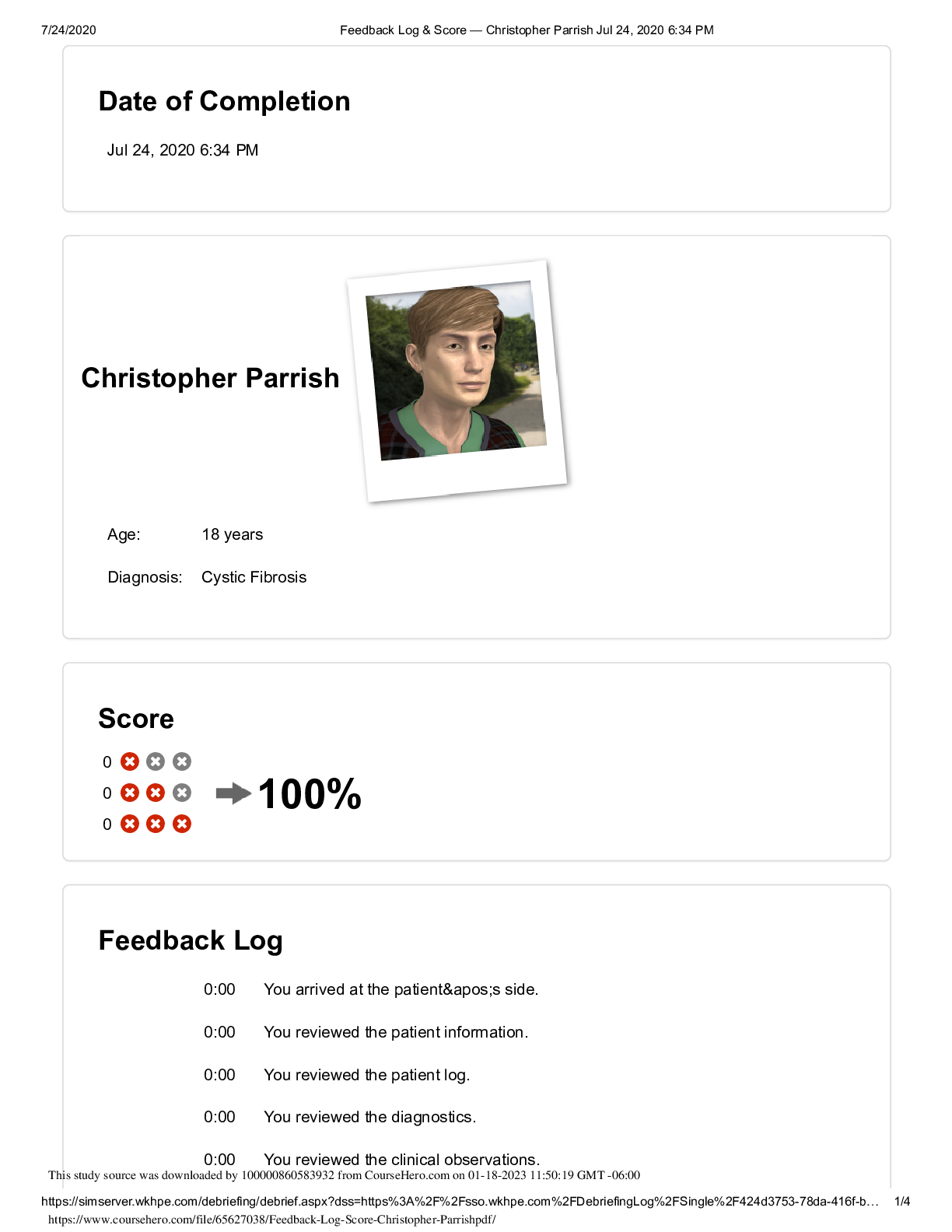
Reviews( 0 )
Document information
Connected school, study & course
About the document
Uploaded On
Jan 18, 2023
Number of pages
4
Written in
Additional information
This document has been written for:
Uploaded
Jan 18, 2023
Downloads
0
Views
65

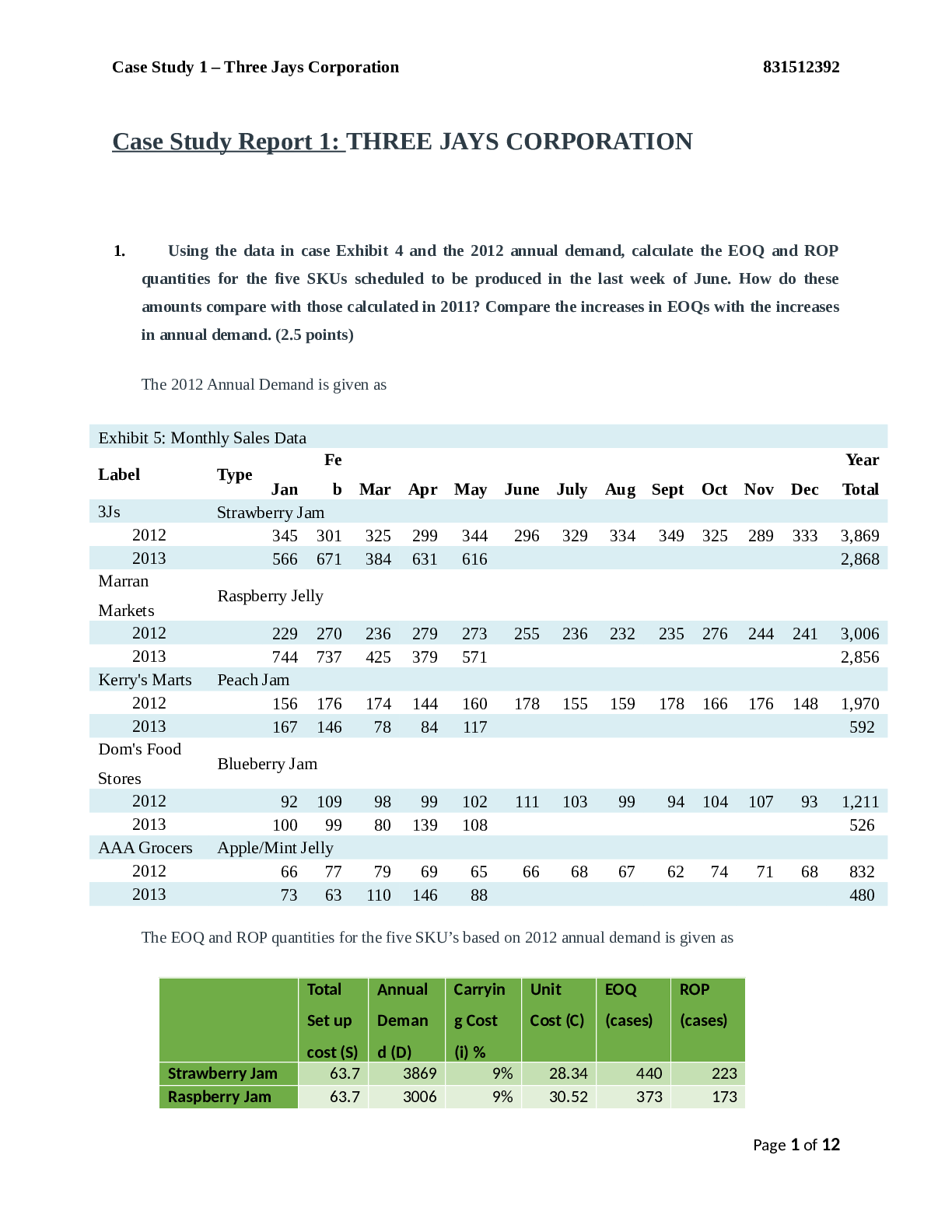
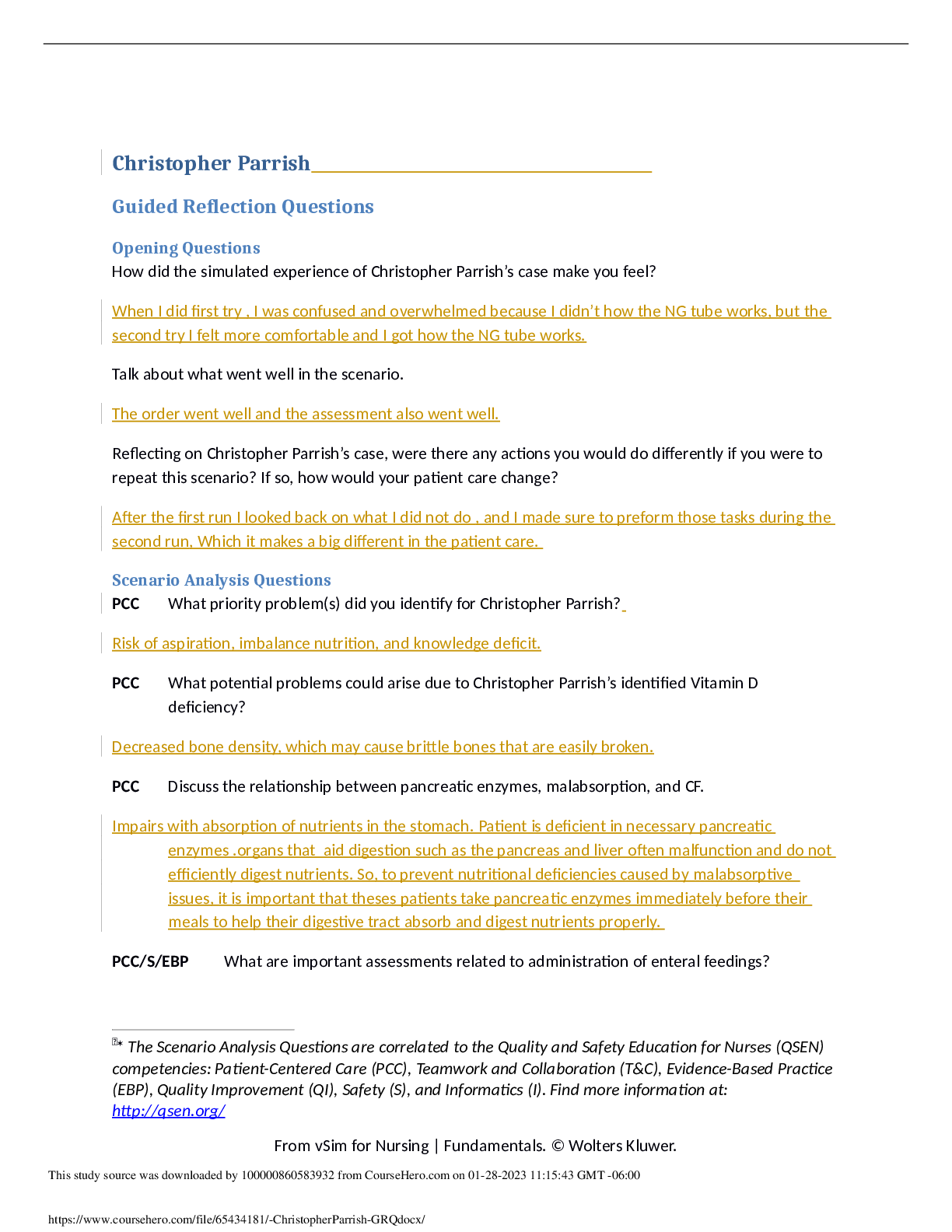
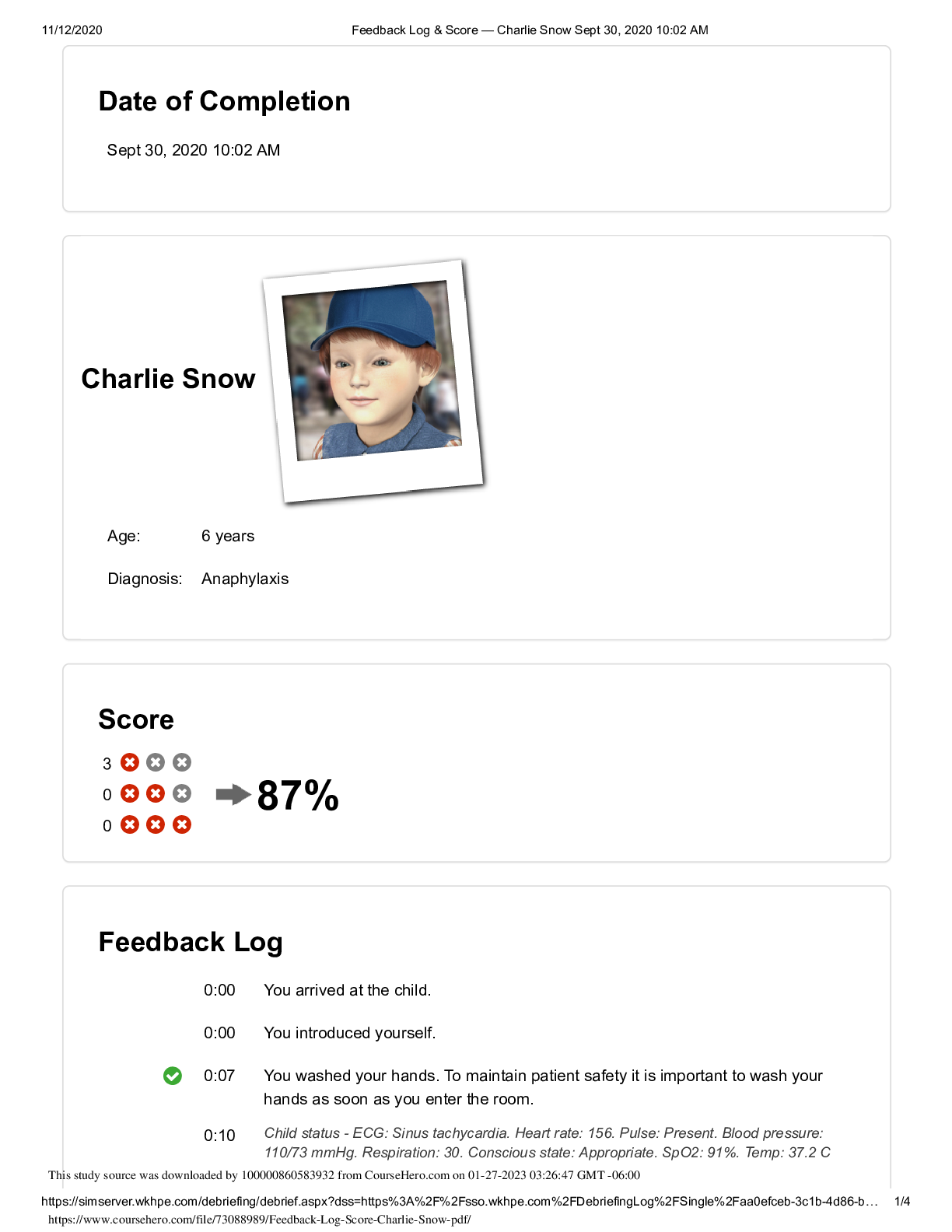
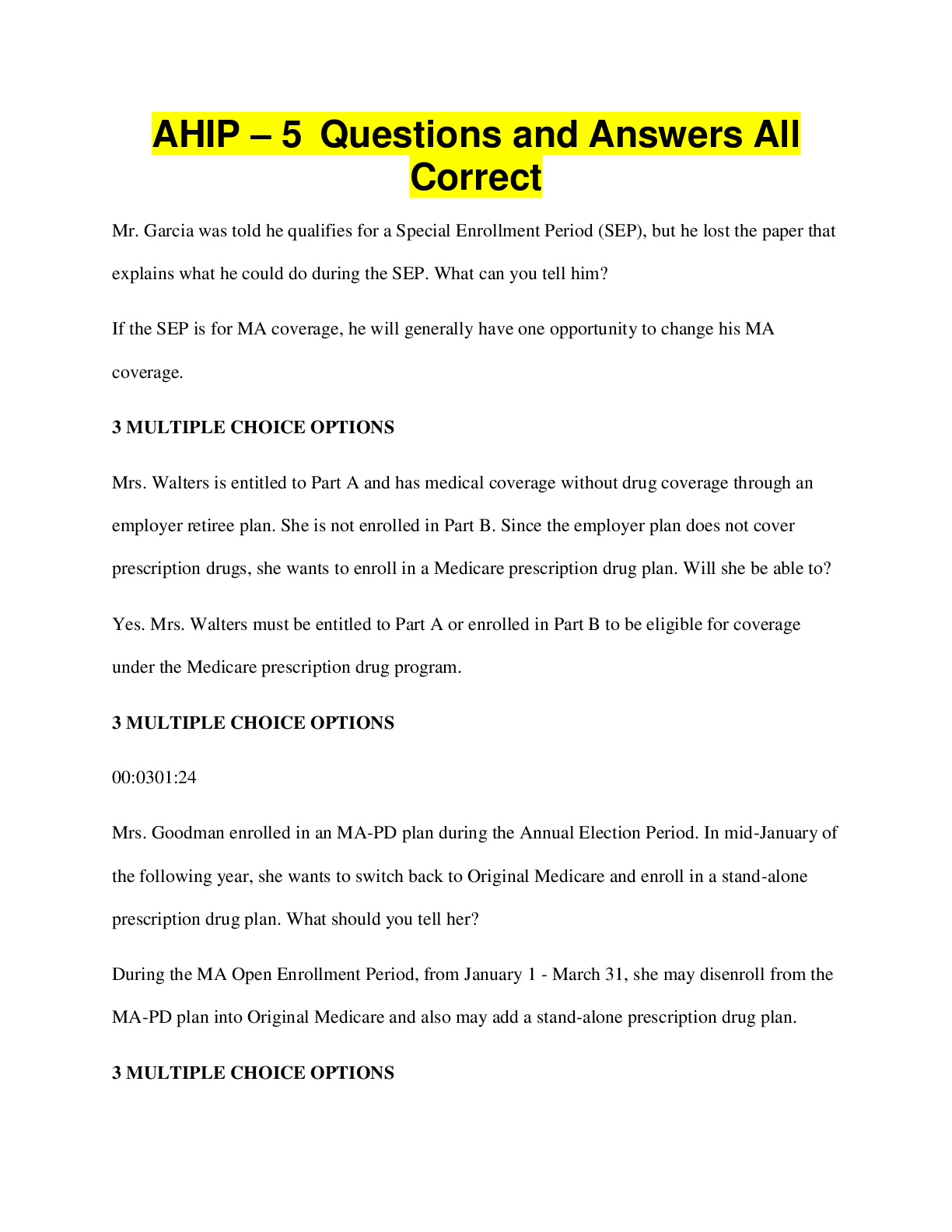
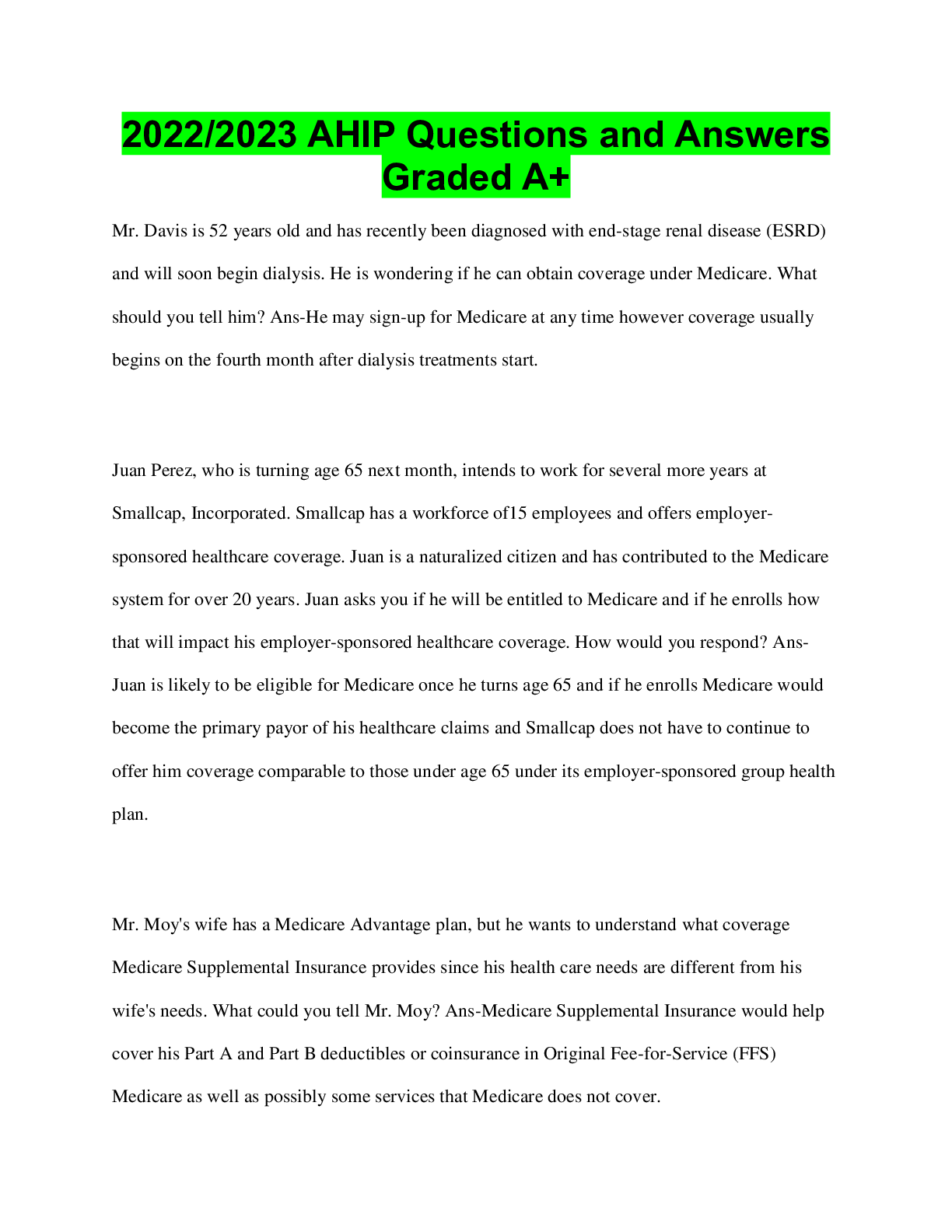
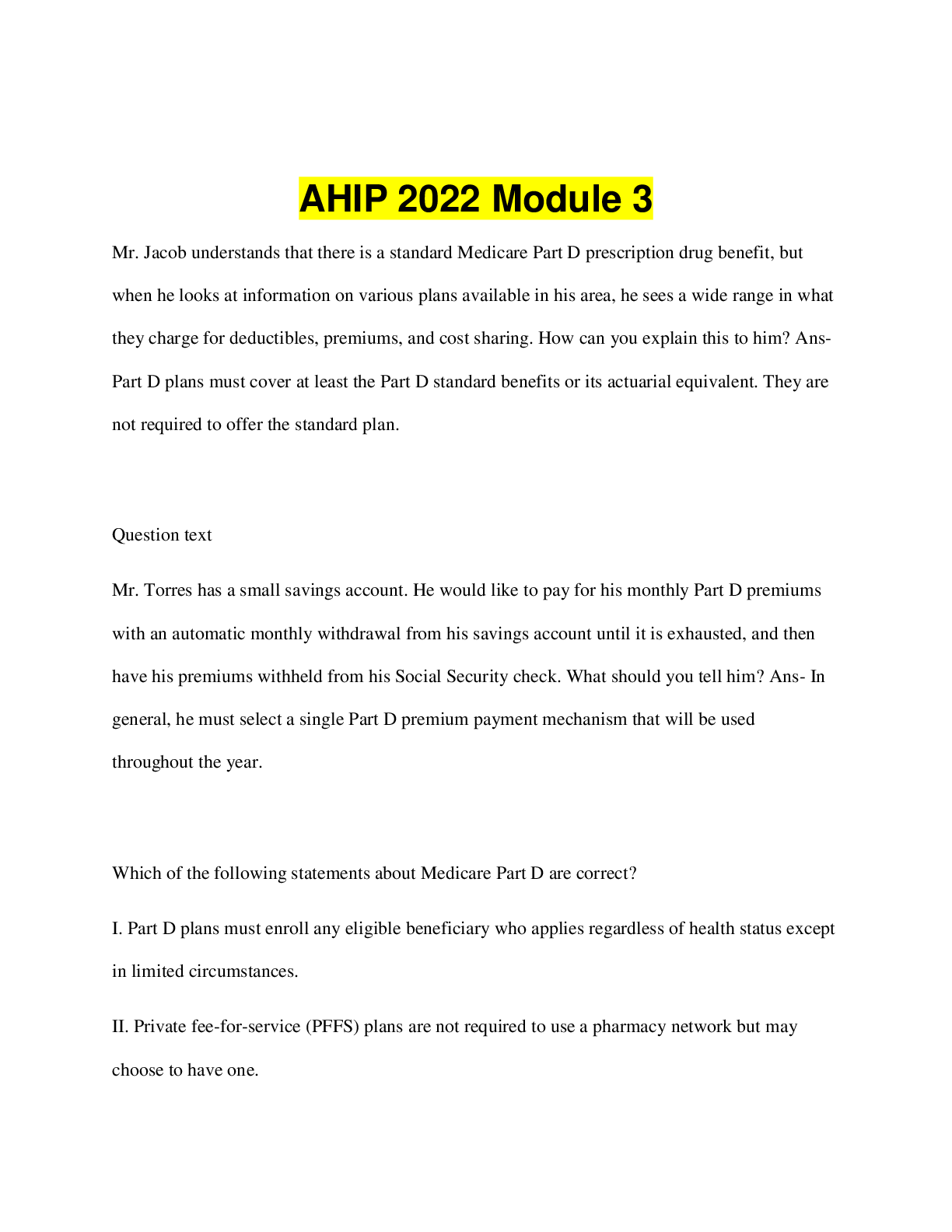
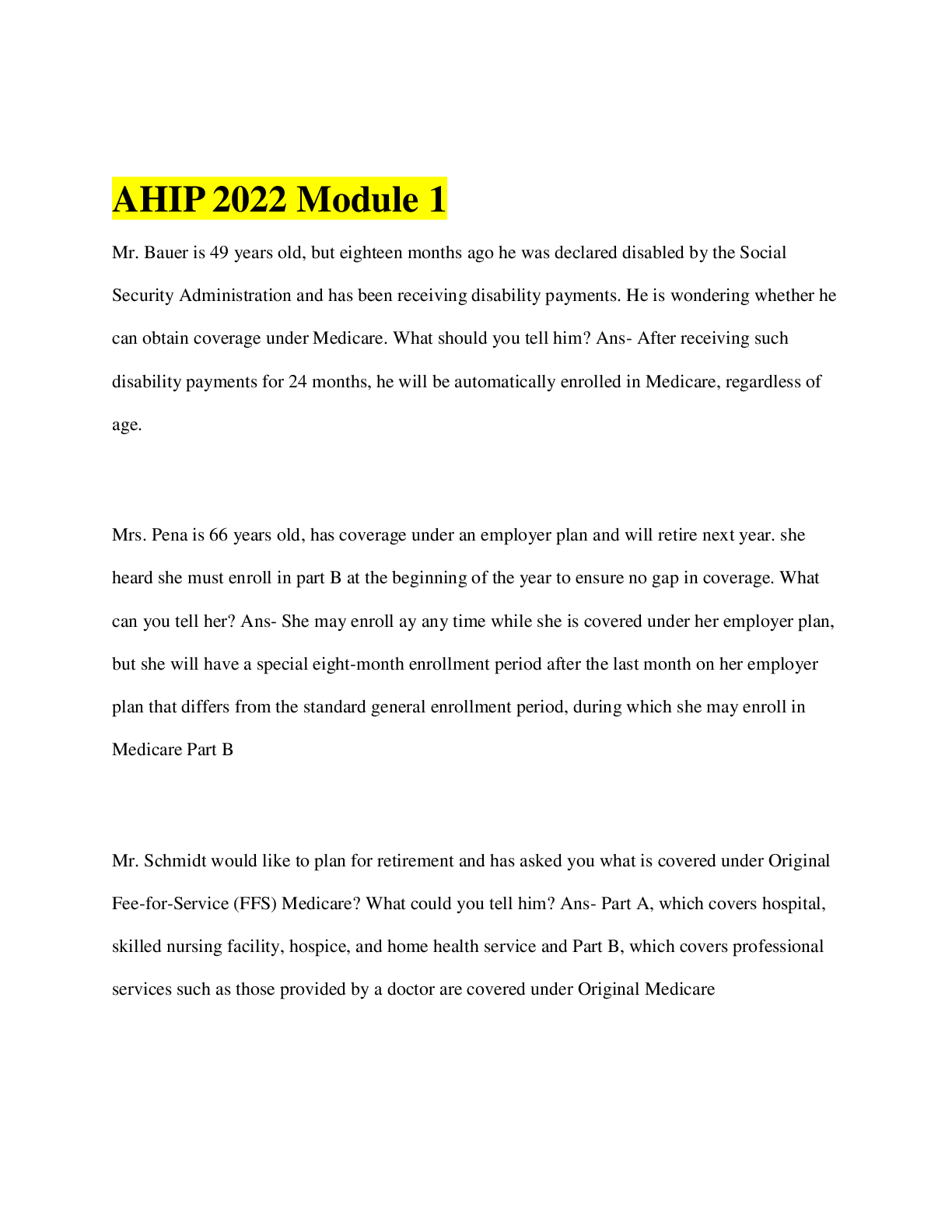
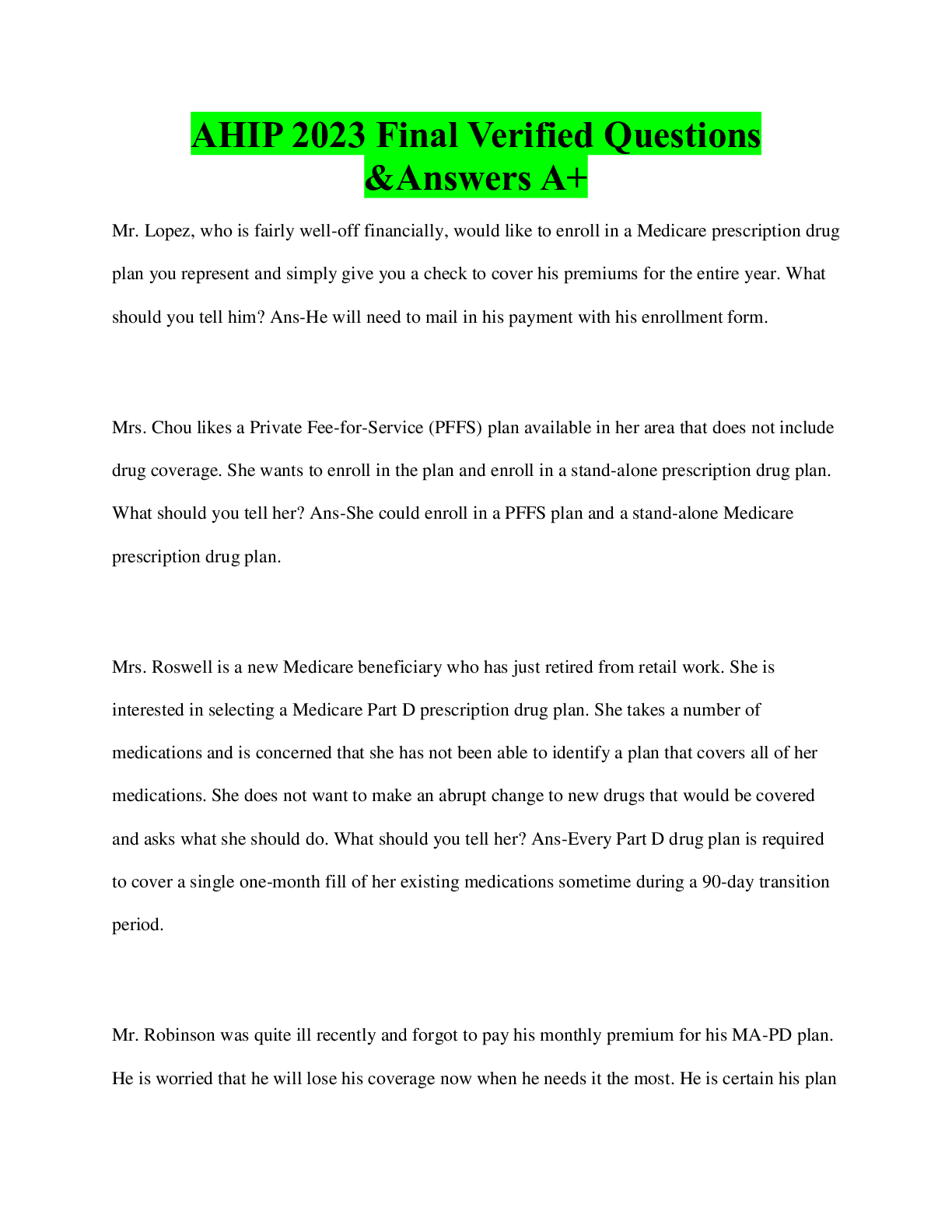

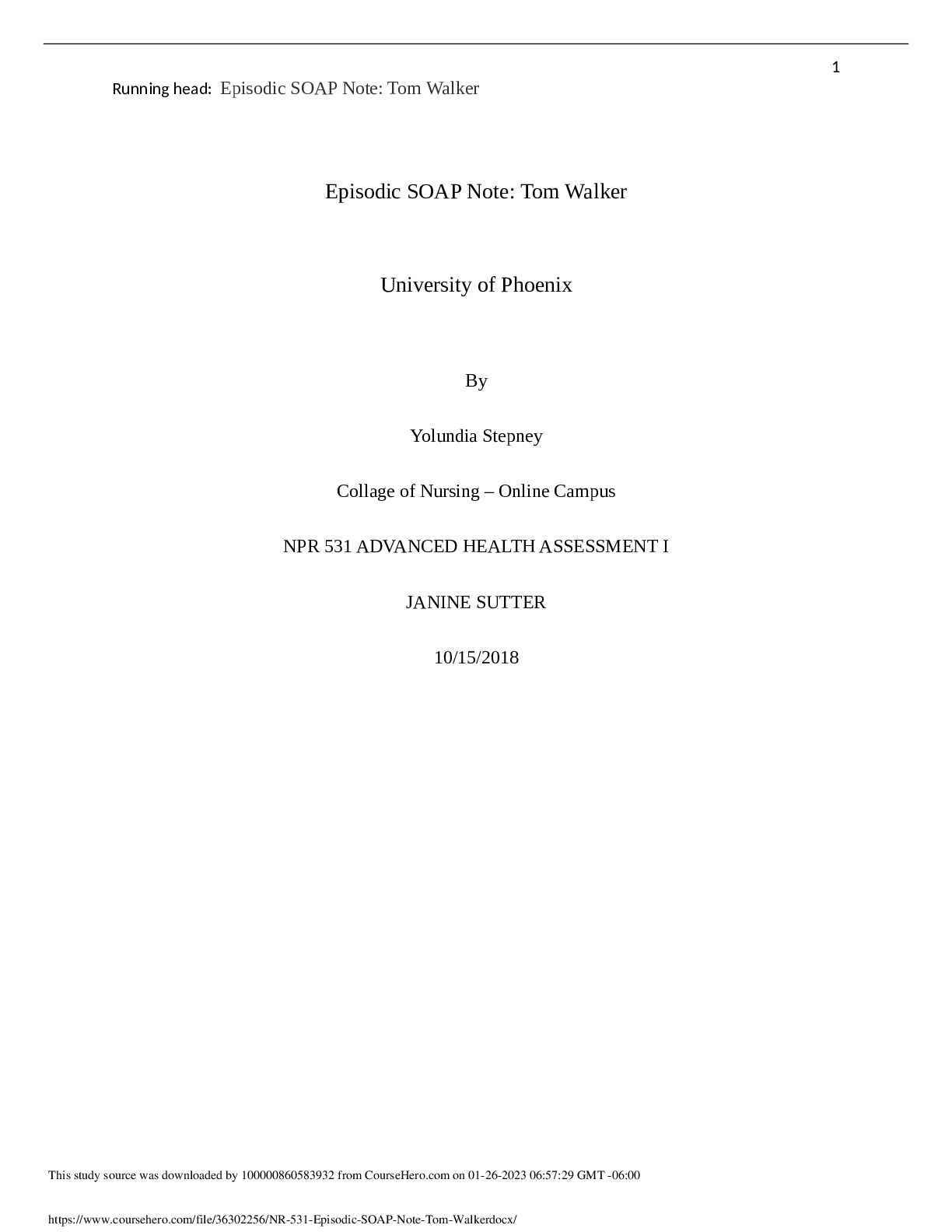
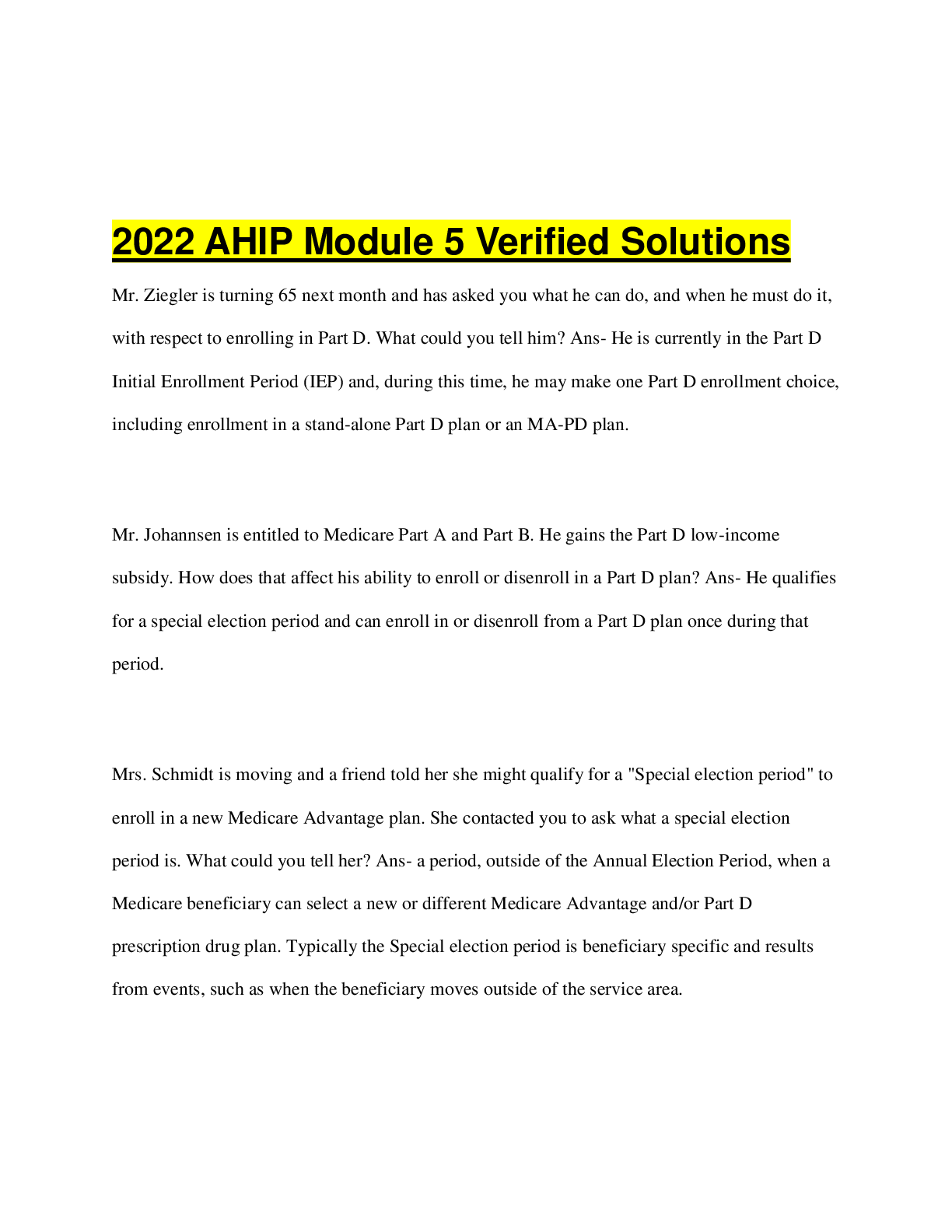
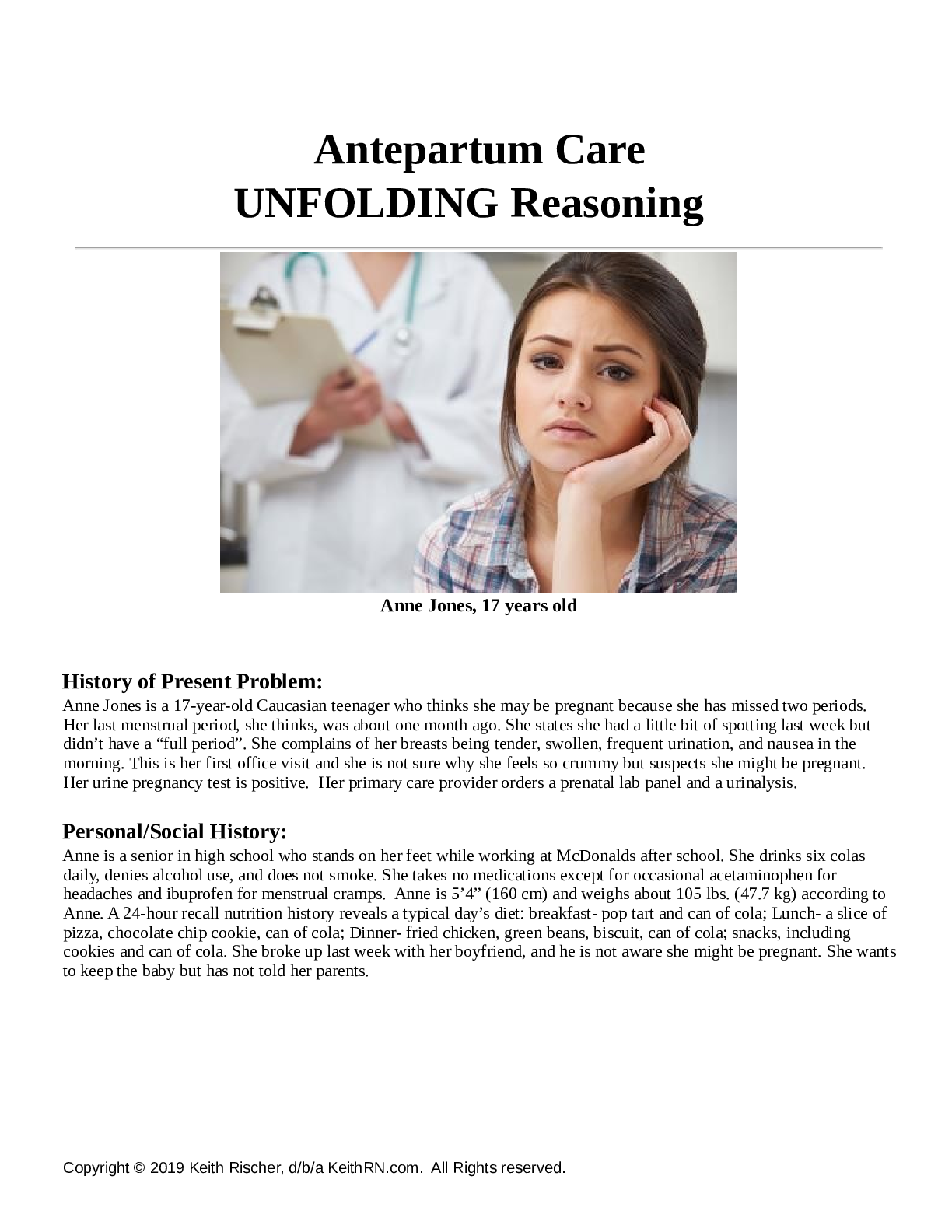
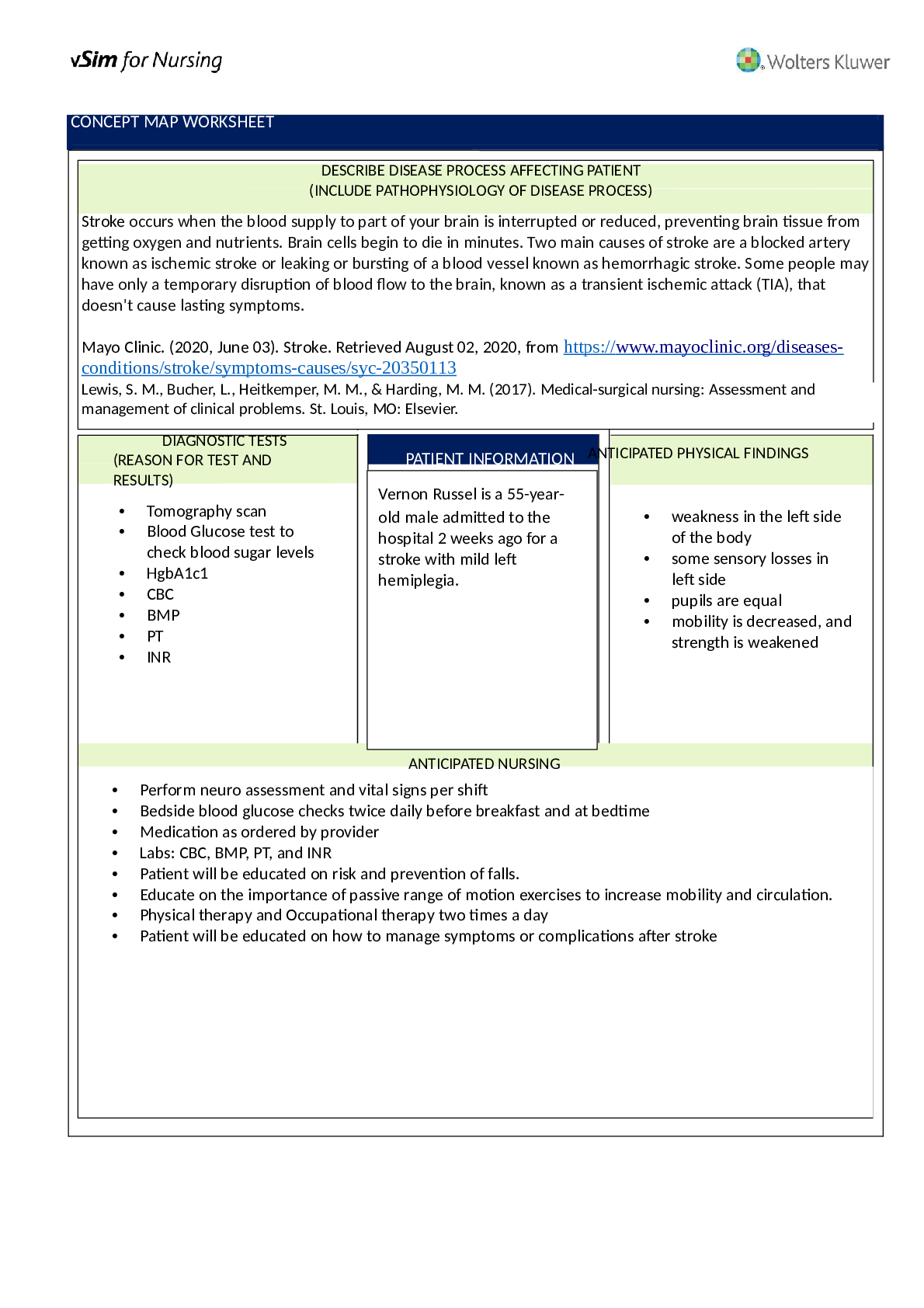

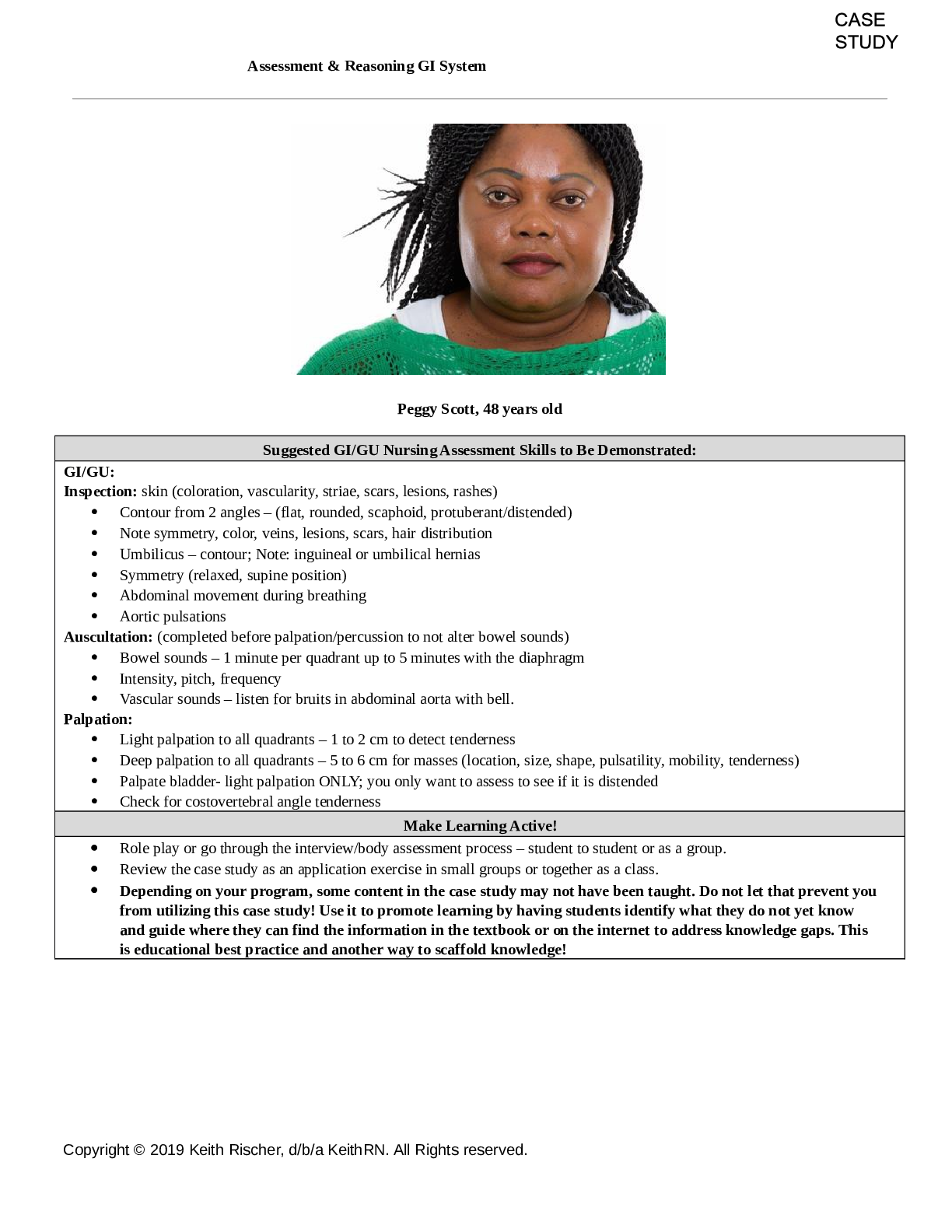
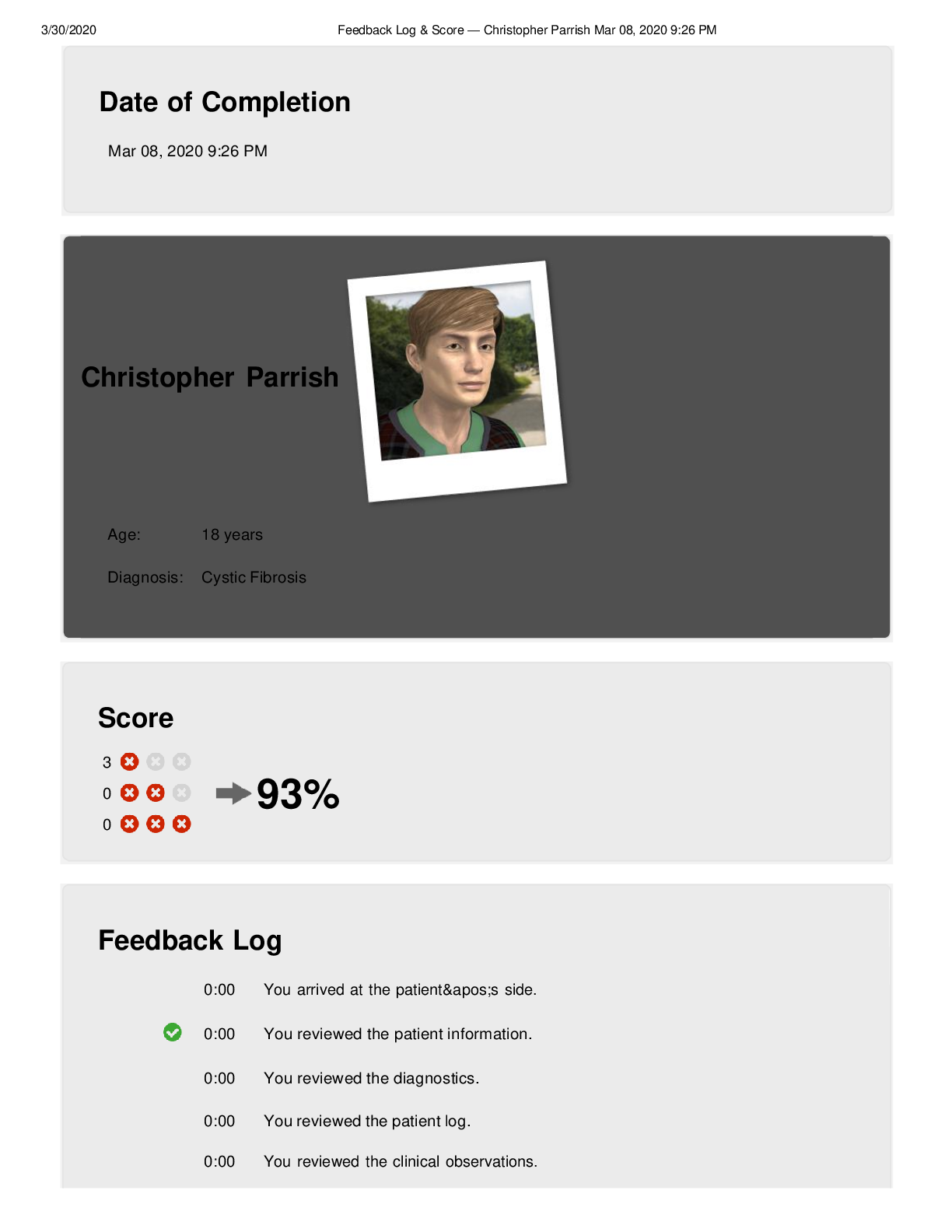
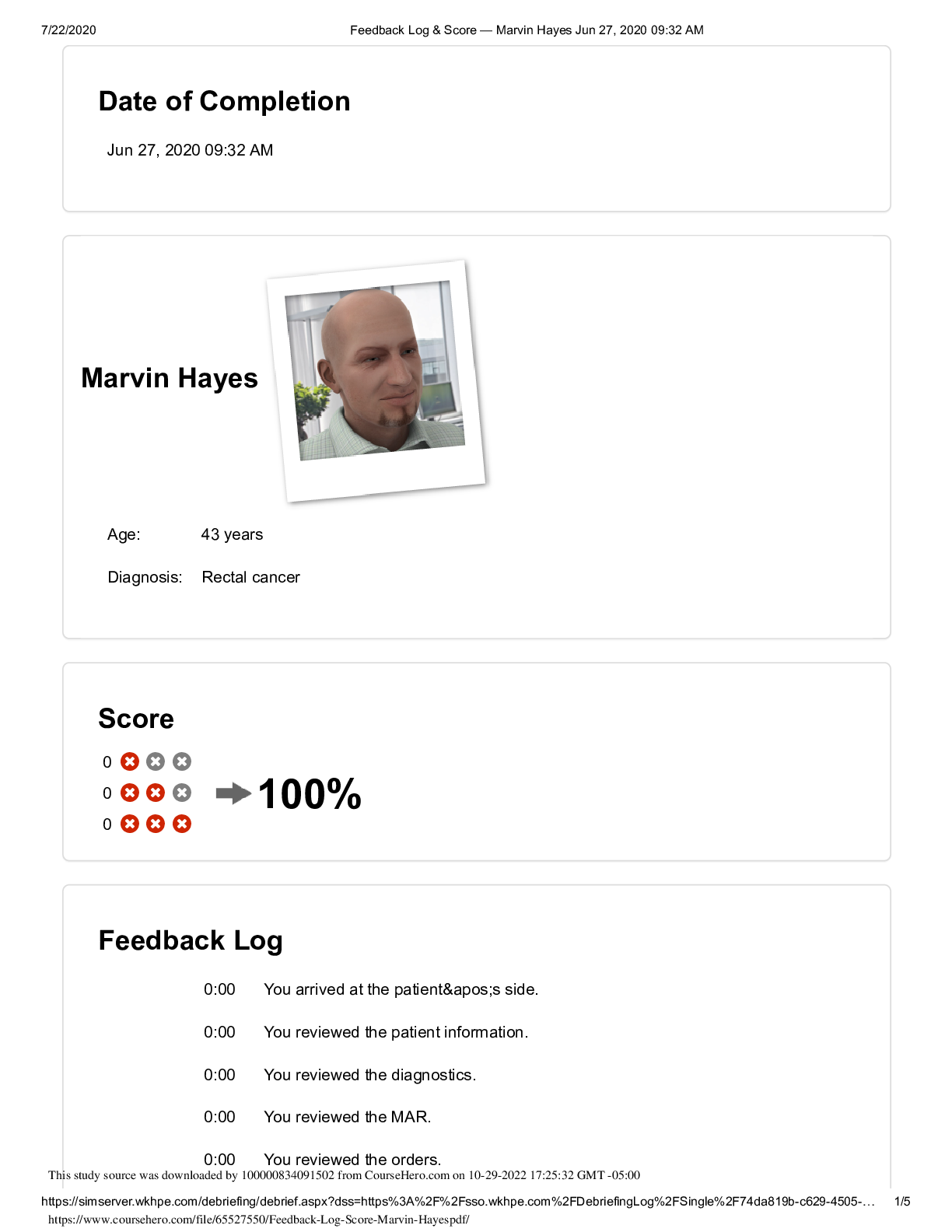
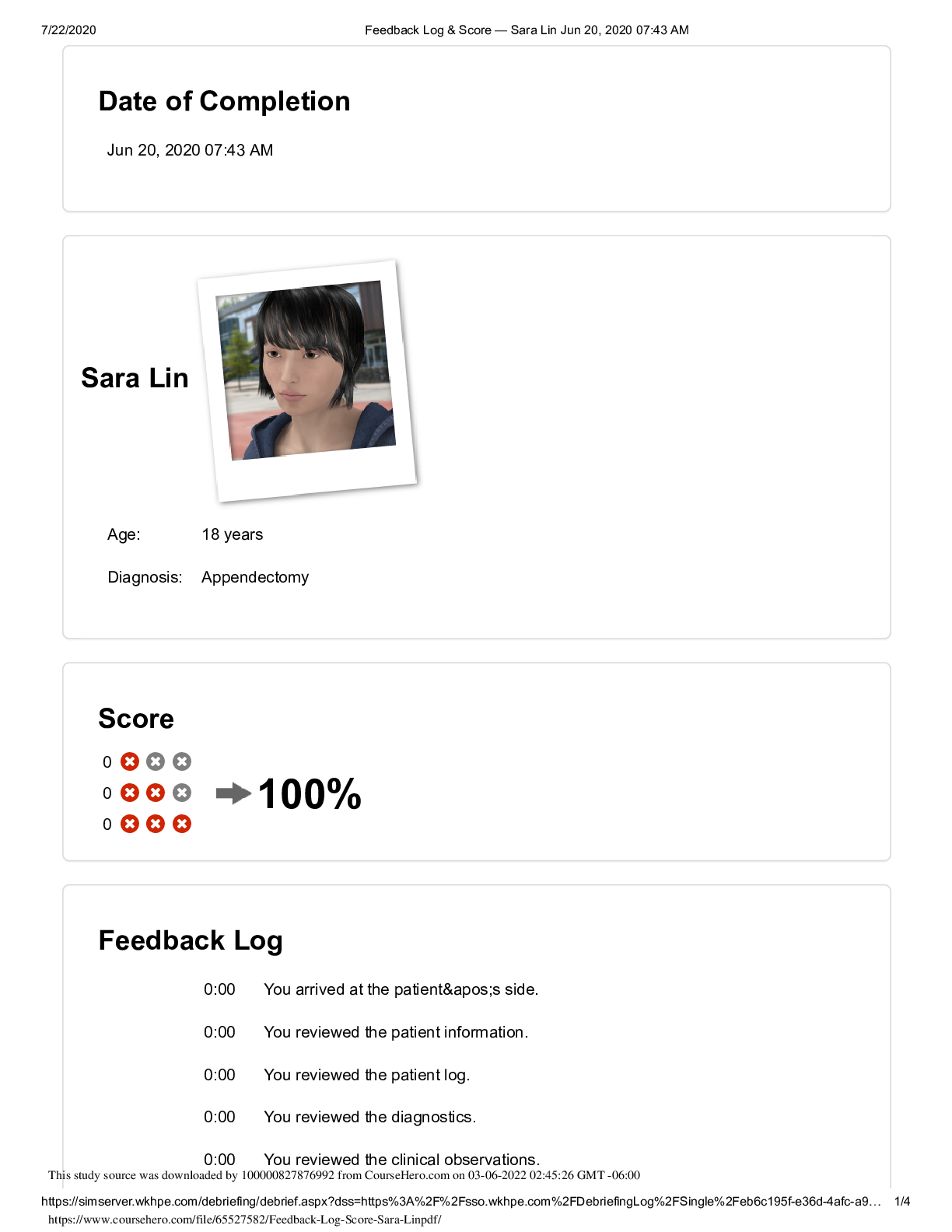
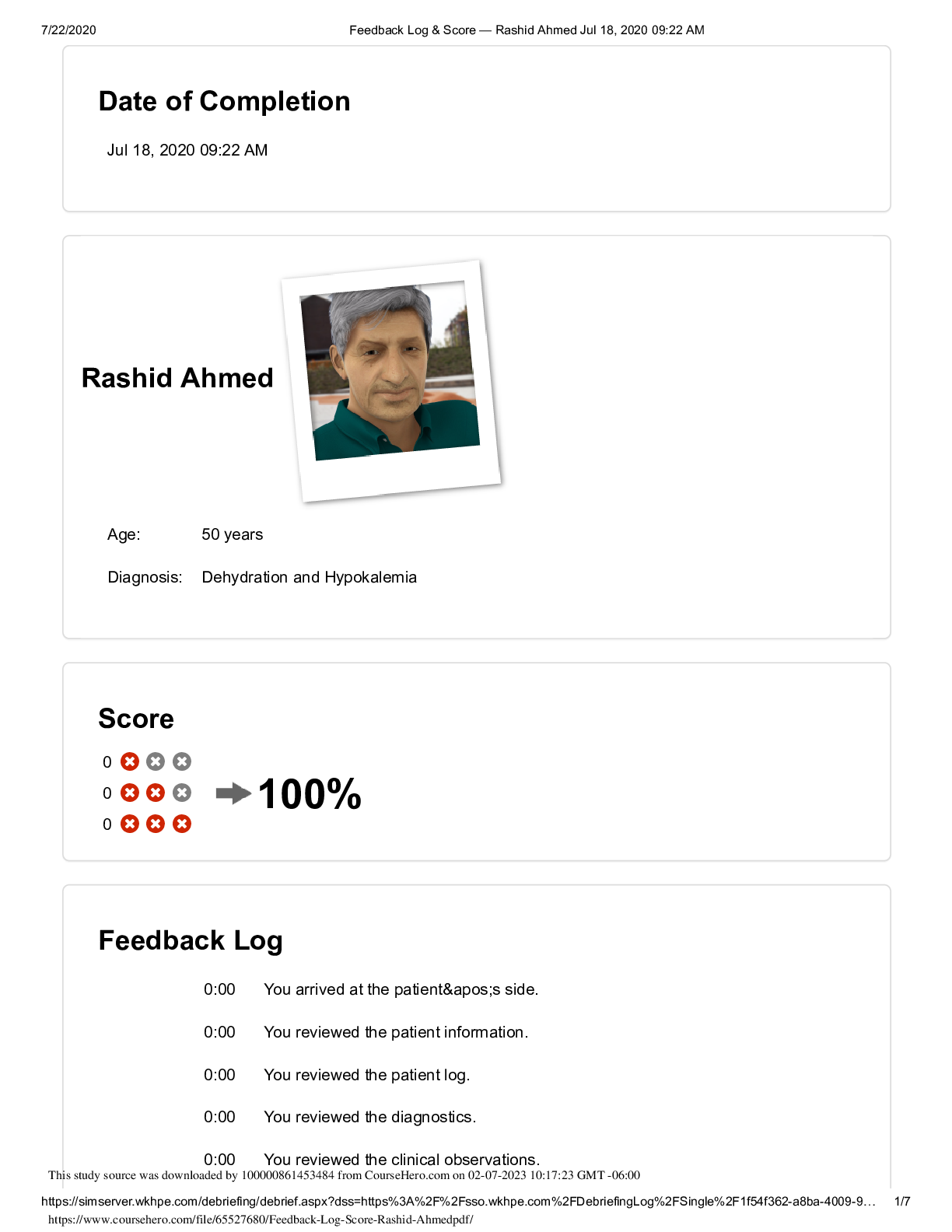
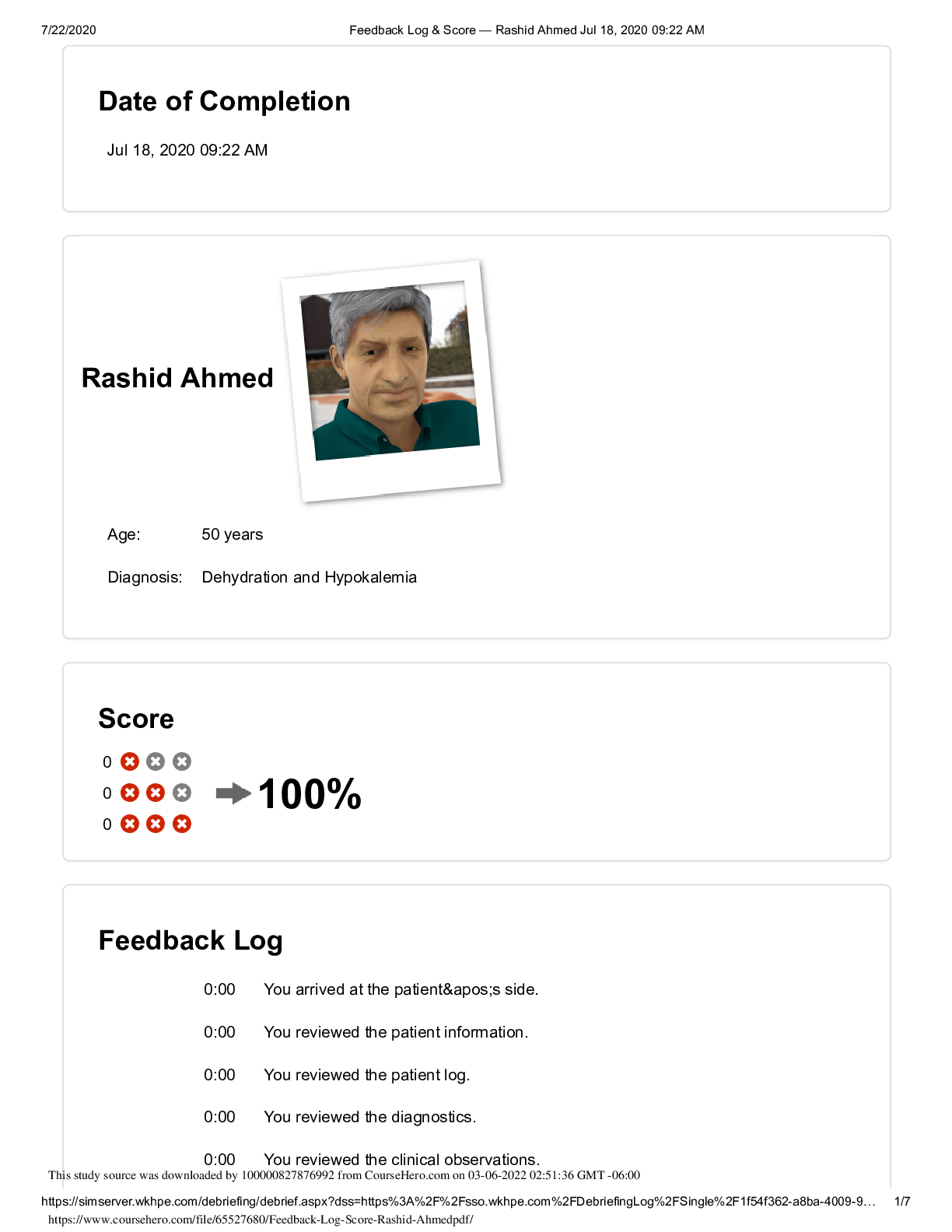

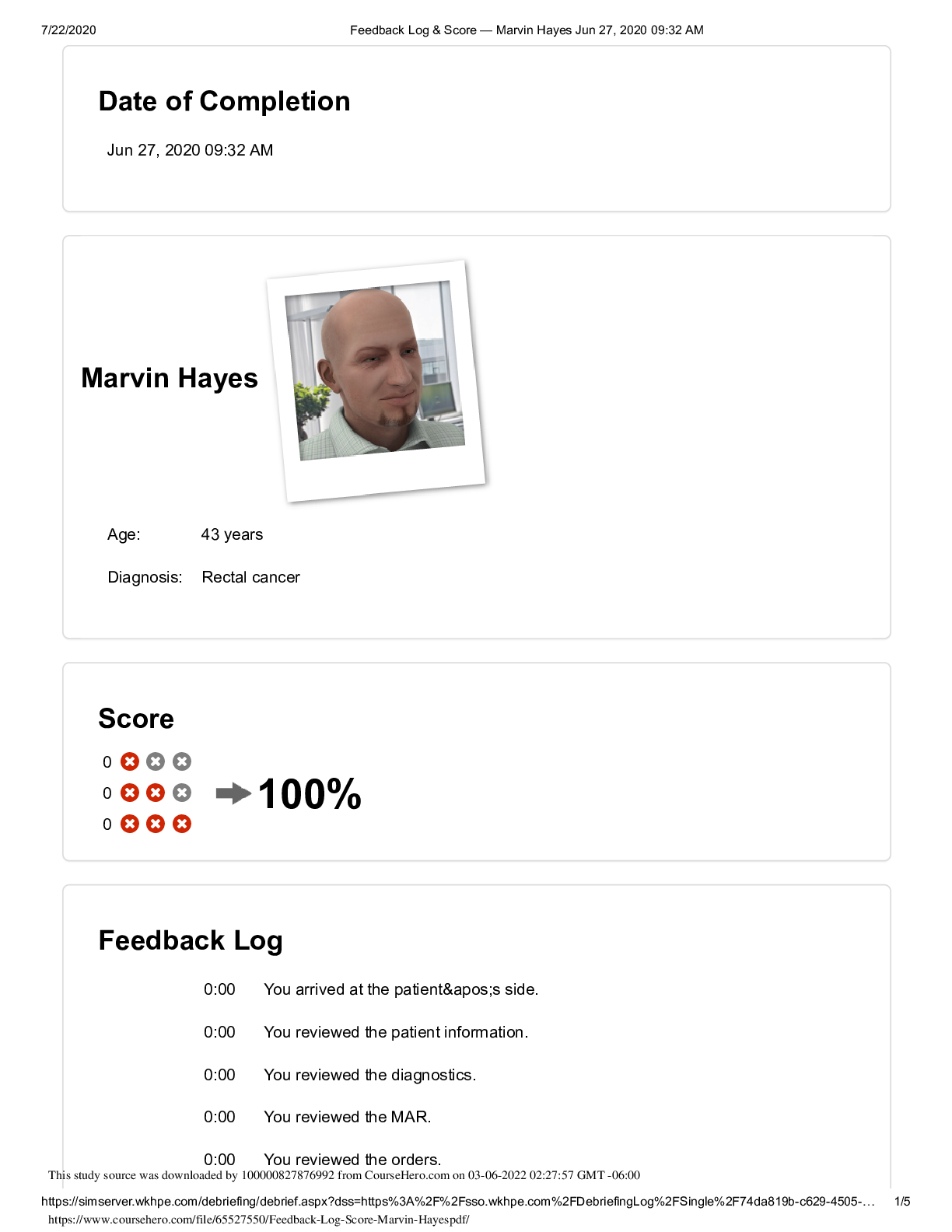

.png)
